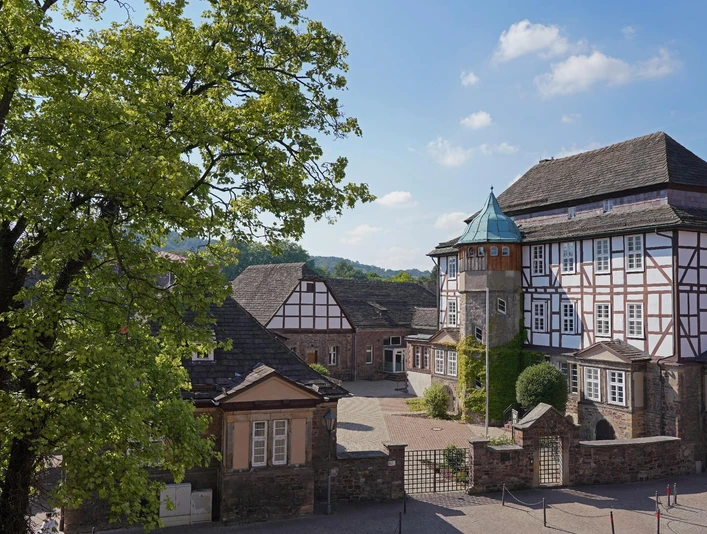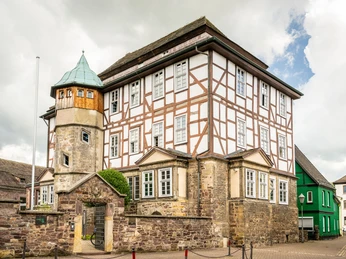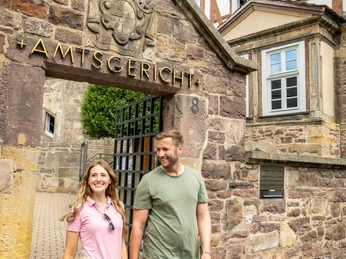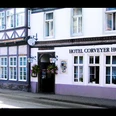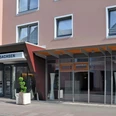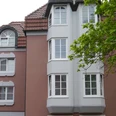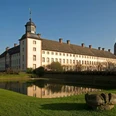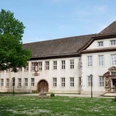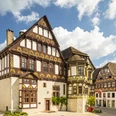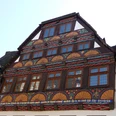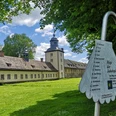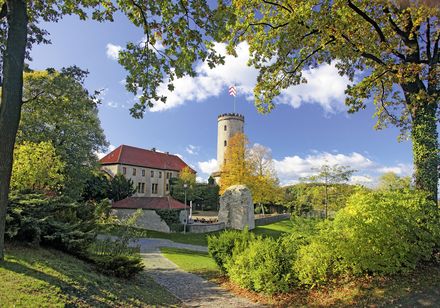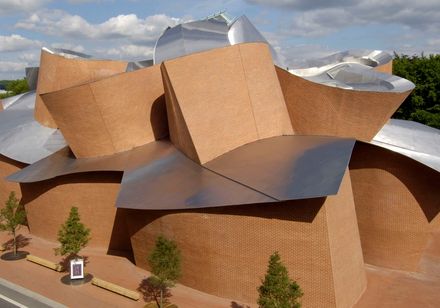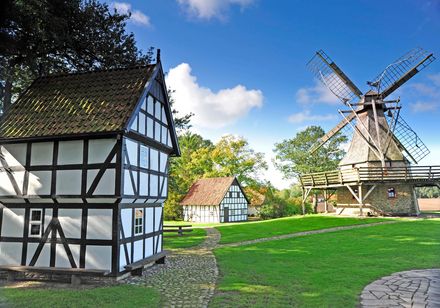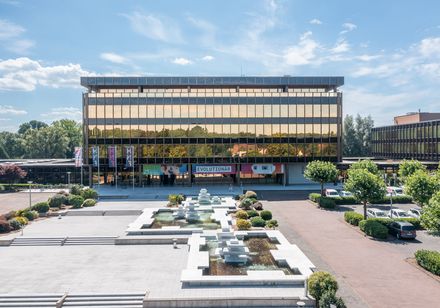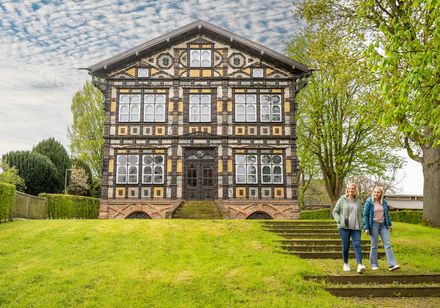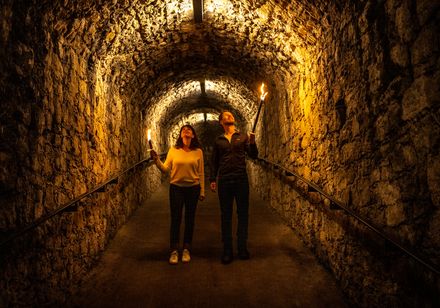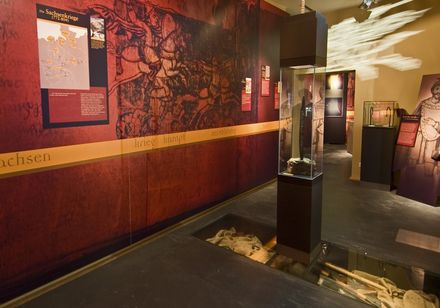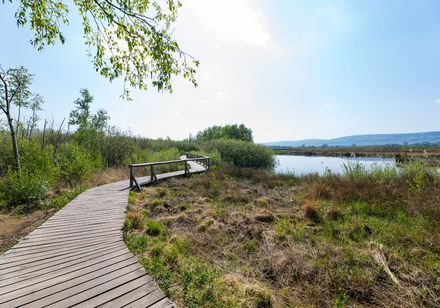The Corvey feudal estate, first mentioned in the 13th century, was named after the noble von Uffeln family, who owned it from 1576 until the beginning of the 18th century and rebuilt it in the Renaissance style. In 1768, it passed to the Corvey abbot Philipp von Spiegel (Wappenstein), who wanted to set up a porcelain factory here in 1772. However, the project failed due to opposition from the Duke of Brunswick-Lüneburg, who feared competition for his manufactory in Fürstenberg.
The courtyard consists of two parallel Renaissance buildings. While the half-timbered structure of the right-hand courtyard building was built in the 18th century, all of the stone ground floors and the stair tower date back to the Renaissance period. The staircase tower and the chandeliers are typical features of upscale aristocratic living culture and emphasise the prestigious importance of the courtyard.
The courtyard has served as a courthouse since 1827.
The courtyard consists of two parallel Renaissance buildings. While the half-timbered structure of the right-hand courtyard building was built in the 18th century, all of the stone ground floors and the stair tower date back to the Renaissance period. The staircase tower and the chandeliers are typical features of upscale aristocratic living culture and emphasise the prestigious importance of the courtyard.
The courtyard has served as a courthouse since 1827.
Good to know
Openings
The building houses the district court, so you should only be allowed to admire it from the outside.
Payment methods
no entrance possible
License (master data)
Tourist-Information Höxter
Nearby
